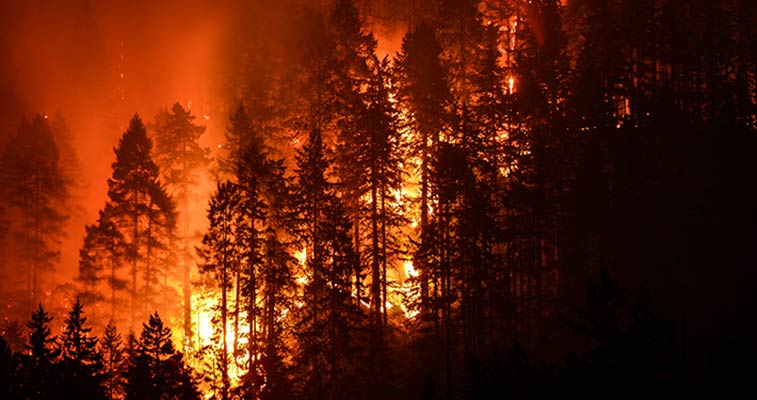Support for members in wildfire-affected areas | Health and safety contacts, support, and resources
Jennifer Wiebe2023-08-25T08:56:11-07:00To our members in the Okanagan and across BC:
Our hearts are with you as you keep watch on the fires in the Okanagan, Similkameen, and Shuswap regions—and 386 active wildfires around the province today. As your partner in health and safety, we are here to extend support to help keep your people safe and well.
Please do not hesitate to reach out with questions or requests for advice and support. Our team is here to assist in any way we can in this difficult situation.
If you are not at immediate risk, this is an important reminder to ensure that we are prepared for any contingency—at work and at home. To assist, we have compiled key links, resources, tips, and information in the article that follows.
Take care and stay safe!
Lisa McGuire, CEO
Manufacturing Safety Alliance of BC
***
Wildfires are a very real risk in British Columbia, especially between April and October during wildfire season. They can spread quickly, particularly in hot, dry conditions. In addition to their potential to destroy wildlife habitats, forests, and watersheds, wildfires can level community infrastructure, homes, and business properties and damage cultural and economic resources. Additionally, wildfires increase the potential for flooding, debris flows, and landslides—and wildfire smoke can also cause significant health problems.
Plan now to help protect your people—and your business—from the destructive impact of wildfires.
Emergency planning
The BC Occupational Health and Safety Regulation does not require employers to have a specific wildfire plan. Still, every employer should be prepared with an emergency response plan that addresses the particular risks of their region—including wildfires.
Your emergency plan for wildfires should include:
- An evacuation plan that you have tested with your employees
- Safety zones around your building
- Equipment on hand in case a wildfire occurs
- Training, education, and communication to ensure that workers know what to do in the event of a wildfire and emergency evacuation
Prepare in advance to help workers get to safety before a wildfire devastates your community. Employees must know and understand what to do if they need to evacuate your worksite quickly. Know the evacuation routes from your facility and create a procedure to account for ALL employees after an emergency evacuation.
ACTION » Get alerts about wildfires in your region
- BC Wildfires Map
- Fire information line: 1-888-336-7378
Air quality
Smoke from wildfire and wildfire cleanup contains chemicals, gases, and fine particles that can harm human health. These hazards can continue even after fires are under control. Fine particles in the air can reduce lung function and cause coughing, wheezing, and difficulty breathing. Most symptoms are short-lived in otherwise healthy people but can be a significant problem for people with pre-existing conditions such as asthma, COPD, and heart conditions.
Symptoms of smoke exposure include:
- Irritation to eyes, nose, and throat
- Coughing
- Wheezing and shortness of breath
- Headaches
- Trouble breathing as normal
- Running nose
- Asthma attacks
Outdoor air quality
Protect outdoor workers exposed to smoke from wildfires. Reduce exposure to smoke as much as possible and follow the air quality advisories for your region. Use the controls available for your situation to reduce the risk to workers.
For example:
- Move work to enclosed spaces with filtered air or another location with better air quality
- Change work schedules or move work indoors where possible to reduce time in unhealthy air
- Respiratory PPE to filter particulates is recommended for employees who have to work outdoors for prolonged periods when the local air quality index is 7 or higher, and especially when the index is 10+. Choose masks or respirator filters labeled N95, N99, N100, R95, P95, P99, or P100).
- Note that it takes more effort to breathe through a respirator, and prolonged use of masks in high temperatures can increase the risk of heat stress. Provide frequent rest breaks, and advise workers feeling dizzy, faint, or nauseated to go to a shaded area (preferably out of the smoke), remove the respirator, and seek medical attention.
- Discard respirators if they become difficult to breathe through, or if the inside becomes dirty. Use a new respirator each day.
Indoor air quality
Working inside a building with a properly maintained ventilation system—and where windows and doors (including loading bay doors) are kept closed as much as possible—will provide some protection for workers from the smoke of nearby wildfires. Regularly inspect and maintain your HVAC system to make sure it is running correctly. You can also improve indoor air quality by running portable air cleaners with HEPA filters.
ACTION » Learn about the air quality in your area
No matter where you are in British Columbia, you are at risk for wildfire. Prepare now to reduce the harm to your people and business.
LEARN MORE »
- Wildfire Safety Resources —Topic Page
- Wildfire Smoke and Air Quality—Topic Page
- Emergency Response Planning (online course)
- BC Wildfire Service
- Emergency Info BC
- Wildfires and Your Health
RESPIRATORY PROTECTION RESOURCES »
Visit Respiratory Protection Resources for a large toolkit of resources and service links, including:
- Air quality assessment services
- Respirator inspection checklist
- Video instructions for donning and doffing respirators
- Posters detailing filter types, seal check basics
- Webinars and conference session links on respiratory protection topics



